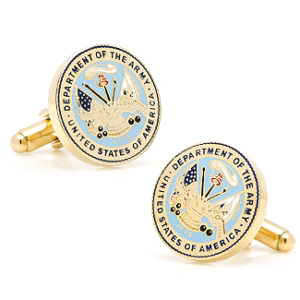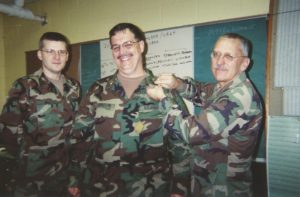A former student of mine graduated with a BA in 2016 and then the MSW (Masters of Social Work) in 2017 from Rutgers. He got his LSW (his license to practice) shortly after graduation. For the last two years, he has worked a couple of different jobs, slowly developing both his macro (policy, writing, program design) and clinical skills. He recently decided that he would leave his job in search of a straight clinical position so that he could accumulate the 3000 hours he needs to earn his LCSW (licensed clinical social worker).
The LCSW is the top license a social worker can get. It allows a person to supervise other social workers (though one needs three years at that level, plus a certificate in clinical supervision in order to supervise LSWs). I know this is a lot to take in for non-social workers. You are welcome to continue reading, but this is a rare post that is directed at the social work population.
My former student is having a hard time finding a position (it is easier for males to find clinical social work jobs than females, as the field is largely made up of women and programs like to have at least one male therapist for diversity’s sake — this is a common theme in fields dominated by women…men continue to have a leg up). He was recently offered a job where he would work a mixture of hours 9-5 and 12-8. Ok. A few nights a week are to be expected, especially early on in a social worker’s career. He was told that he would have to work both weekend days. That’s brutal. Here is where it gets even worse – the days would be M, W, F, S, S. So the days off aren’t even bunched together. Then he found out that he couldn’t even get supervision from the supervisor in order to earn his LCSW, as the supervisor hasn’t had the license long enough. Horrific. One more thing – the pay wasn’t very good. He turned it down.
But the program had dozens of people applying. And here is why:
Over the last 10 to 12 years, many of the various schools of social work have rapidly expanded their programs (Rutgers either tripled or quadrupled the size of their student body). The University of Southern California created an online program several years ago and they’ve quickly become a national behemoth (I’ll write another time about the horror show that is online education, particularly for professions that rely on face-to-face contact). In their race to increase revenue by adding students, these schools have absolutely flooded the market with MSWs.
A flooded market means that there is a large labor pool. Too large. There aren’t enough jobs for all of the MSWs that are being produced. Schools will argue that there are jobs – but besides the aforementioned position, many of the jobs that people are offered out of school are either part time or per diem. Usually well beneath their skill set. Usually without much of a chance for clinical hours. Usually without a qualified supervisor.
The lack of jobs has led to a secondary problem. Because there is such a large pool of educated workers, it has led to wage suppression. And for people with student loans or housing costs (so basically, almost everyone), the money is untenable.I see this problem only getting worse.
The schools have done a huge disservice to their students. But wait, there is more. Because of grade inflation, many students are graduating with high GPAs thinking that it is the key to a good starting job. The schools are relying on either overworked adjuncts or researchers who don’t really understand the field to teach students and prepare them for their career. And still, there is more. For the last decade, a majority of my students (both undergraduate and graduate) report getting substandard or little to no supervision at their field placements (the internships tend to be 16 hours the first year and 22 hours a week the second year, usually of course, for no money). This is true for schools of social work around the country.
It’s a galling situation, and pretty depressing for any newly minted MSWs or current social work students. The schools aren’t going to pull back and give up all of that sweet tuition. I am hoping that I can convince some of the professional organizations to begin to address this problem (full disclosure, I’m on the Board of Directors for NASW-NJ, and to be very clear, my views are my own and not NASWs).
If you are a new MSW or are currently a student, there are a few actions you can take to make yourself more likely to survive in this awful labor market.
1) Pick a supervisor, not a job/internship. Find someone that loves teaching and mentoring and that will always find time for you each week to review your work, have you present cases, and continue to develop your skills.
2) Join your state NASW chapter and go to the monthly meetings in your county. Take service and leadership positions within your local and state units. Develop and expand your network (find as many ways as possible to do this).
3) Make a list of the skills that you have. Counseling skills include:
- Engaging
- Exploration
- Sustaining the Dialogue
- Refocusing
- Seeking Clarification
- Reflection
- Sharing Information
- Validation
- Appreciation
- Review/Summarizing
- Contracting
- Role-play
- Confrontation
Clinical skills include:
- Clinical Expertise (Anxiety, Substance Misuse, ADHD, PTSD, C-PTSD)
- Counseling Special Populations (spectrum, veterans, criminal justice, seniors, children)
Clinical modalities include:
- Individual (the most basic, and therefore, the easiest to find)
- Couples (for over a decade, I viewed this as Dante’s 9th level of counseling hell…now I do a lot of this with law enforcement, military and veterans)
- Group
- Family
- Multi-family (the rarest skill)
Other social work skills:
- Case Management (again, very basic and very replaceable)
- Assessments and Diagnosing
- Written reports
- Grant Writing (incredibly valuable)
- Article Writing
- Public Speaking (incredibly rare)
- Training
- Supervision (fairly rare)
- Public Policy Formation
- Program Evaluation
- Data Collection
- Teaching
- Coalition building
- Administration
- Billing
- Reviewing paperwork
- Outreach/Marketing
- Recruiting
- Program Design
Find an internship/job that will teach and develop some of these skills. They can only be taught by someone who can actually do them. When you apply, don’t talk about your degree or your GPA. Talk about the skills you have. And be specific about the ones you want to learn.
4) Do you have any other specialized skills? Are you good with Excel or SPSS? Can you write code? Do you have advanced computer skills? Can you speak a second or third language? If so, let your prospective employers know. Put it at the top of your resume. If you don’t have any of these, consider taking more classes (I know, I know) to make yourself a better candidate.
5) Accept that you will probably work some nights and weekends. Tell your family, friends and significant other that this is how the field works. If you are a clinical person, make a careful plan on how long your hours will take you and don’t deviate from your plan. Get your licenses as quickly as possible. If you are a management/policy social worker, you want to develop a number of those aforementioned skills. Remember that the more rare and stronger your skillset, the more likely you’ll get the kind of job you want. You’ll also get paid more.
6) This one will irritate many people: to really get ahead, you may want to consider working a full-time job and a part-time job. They should be very different. You’ll develop a better understanding of the field. You’ll learn new skills. You’ll expand your network much quicker. This comes with a sacrifice though, as time is a zero-sum game. You’ll need to have some serious (and difficult) conversations with people in your life. (To be very clear, I’m not advocating that you work 60+ hour weeks for 10 years. That is a relationship killer, and the best predictor of happiness is the amount of time spent with people that you care about. I’m suggesting that you work a nutty schedule for 2-5 years and then scale back.)
I wish it weren’t this way. Between the nature of late-stage American capitalism and the flooding of the market by the schools, students and recent graduates are in a terrible bind. This is the path forward.




